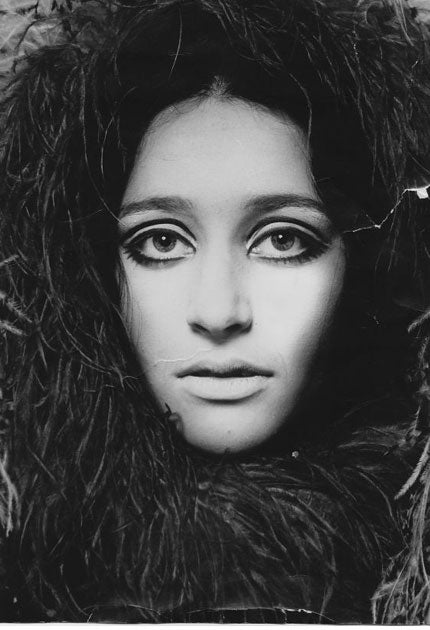Rebecca Nassauer: Artist whose later work confronted terminal illness with her characteristic playfulness

If making art is about empowerment, then terminal illness, by sharply reducing the horizon, concentrates the mind and stretches the imagination perhaps more than anything else. The artist Rebecca Nassauer's 12-year-long battle with breast cancer culminated in a large series of sculpted heads which embody both her state of mind and the remaining healthy part of herself. Entitled Safekeepers, they were exhibited last spring at her son Josh Lilley's London gallery.
Some are less than an inch high, others as much as two feet tall. Staring, crying, mute, astonished, mounted on thin steel poles or sitting precariously on ledges, they are made of plasticene, wood, ceramic, brushes, screws, feathers, shells, bandages, syringes and other medical paraphernalia, materials in the main not so much found (an eternal magpie, Rebecca would spend hours trawling streets and skips) as finding a new role in retirement.
This "pantheon of watchful entities", as Ben Street described them, is primitive only in its directness and is as profound as it is playful. It manifests the artist's immense curiosity, implacable eye, technical skill, vivid imagination, and, though she owned up to a healthy dose of denial, considerable courage. Influences such as Paul Klee, Joseph Cornell and Thomas Shutte may at times be discernible, but no one else's work is remotely like hers, just as no one else was remotely like Reb.
Rebecca Nassauer grew up in West Hampstead, the younger daughter of gifted but difficult parents (the novelist, poet and wine merchant Rudi Nassauer and the film-maker and novelist Bernice Rubens). Her mother's siblings were all professional musicians (Harold was a piano prodigy whose breakdown was fictionalised in Bernice's Booker prize-winning novel, The Elected Member), as is Rebecca's sister Sharon. Rudi was bull-like and serious, Bernice petite and fiery. He came from a well-to-do Frankfurt family who, complacent in their assimilation, escaped Germany by a whisker in April 1939; Bernice's father, a Latvian immigrant who sold clothing on tick in the Welsh valleys, had been dumped in Cardiff, where for weeks he believed he was in New York. From her father, Rebecca got her love of Chinese food and knowledge of wine; from her mother, her exotic looks and gravelly laugh.
But for all its culture, the house in Compayne Gardens was not a congenial home for sensitive, gifted children, alternately threatened ("wait till you father gets home") and neglected ("your mother's in a country inside another country somewhere in Africa making a film"). Alarmed by the company Rebecca was keeping in her early teens, her parents packed her off to the Quaker St Christopher's at Letchworth. But after they separated she returned to London, where a foundation year at St Martins ended her formal art education. A resolute though unconfrontational personality, sure eye and practised technique (she continued regular life-drawing till her death) underpins all her work, giving it energy and wit and preventing it from descending into whimsy.
In the early 1970s she produced woven beaded jewellery for, among others, Fiorucci, Ringo Starr and Dionne Warwick; travelled a great deal in the Americas, and built and lived on a boat in Amsterdam with her future husband, Rob Lilley. A spell with the feminist theatrical companies Sitting Ducks and Beryl and the Perils, with whom she successfully toured Europe, ended with her first pregnancy.
On safari in Kenya in 1993 with her two young sons, she fell in love with, and started sculpting, giraffes. Until their mysterious disappearance (we await their return) her four huge metal giraffes on Scrubs Lane, which won the Harlesden City Challenge Award, gave daily pleasure to thousands. Later she designed costumes and sets fortheatrical productions in Africa and South America, for the Tricycle Theatre and Channel 4, a light installation for Brompton Hospital and public sculpture around Queen's Park, where she lived. During the last 20 years she exhibited frequently in London, as well as Tanzania, France, Australia and Brazil. Between 1992-93 she taught at the NW London School of Design, between 2001-2004 at Acland Burghley school, and held regular workshops for sixth-form students.
No CV could capture the breadth of her interests or sympathies, her electrifying smile or infectious laugh (honed by a lifetime's roll-ups). No one cared more about making things, or less for conventional achievement. She packed more into her short life than anyone I have ever known, and also gave more back. Radiantly beautiful, a wonderful cook, she loved laughter, parties, many people, animals (especially dogs), and above all her sons, Josh and Dash.
Rebecca Nassauer, artist: born London 29 May 1951; married 1981 Rob Lilley (two sons); died London 12 December 2010.
Join our commenting forum
Join thought-provoking conversations, follow other Independent readers and see their replies
Comments
Bookmark popover
Removed from bookmarks